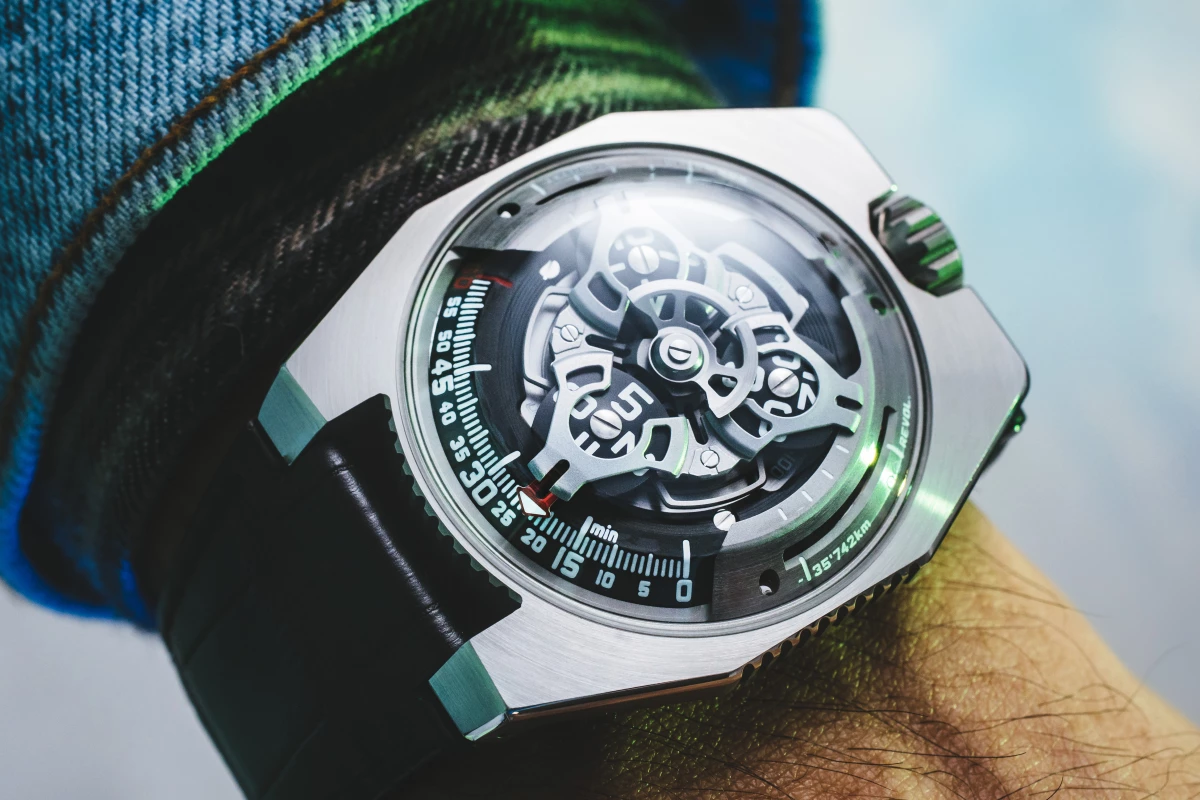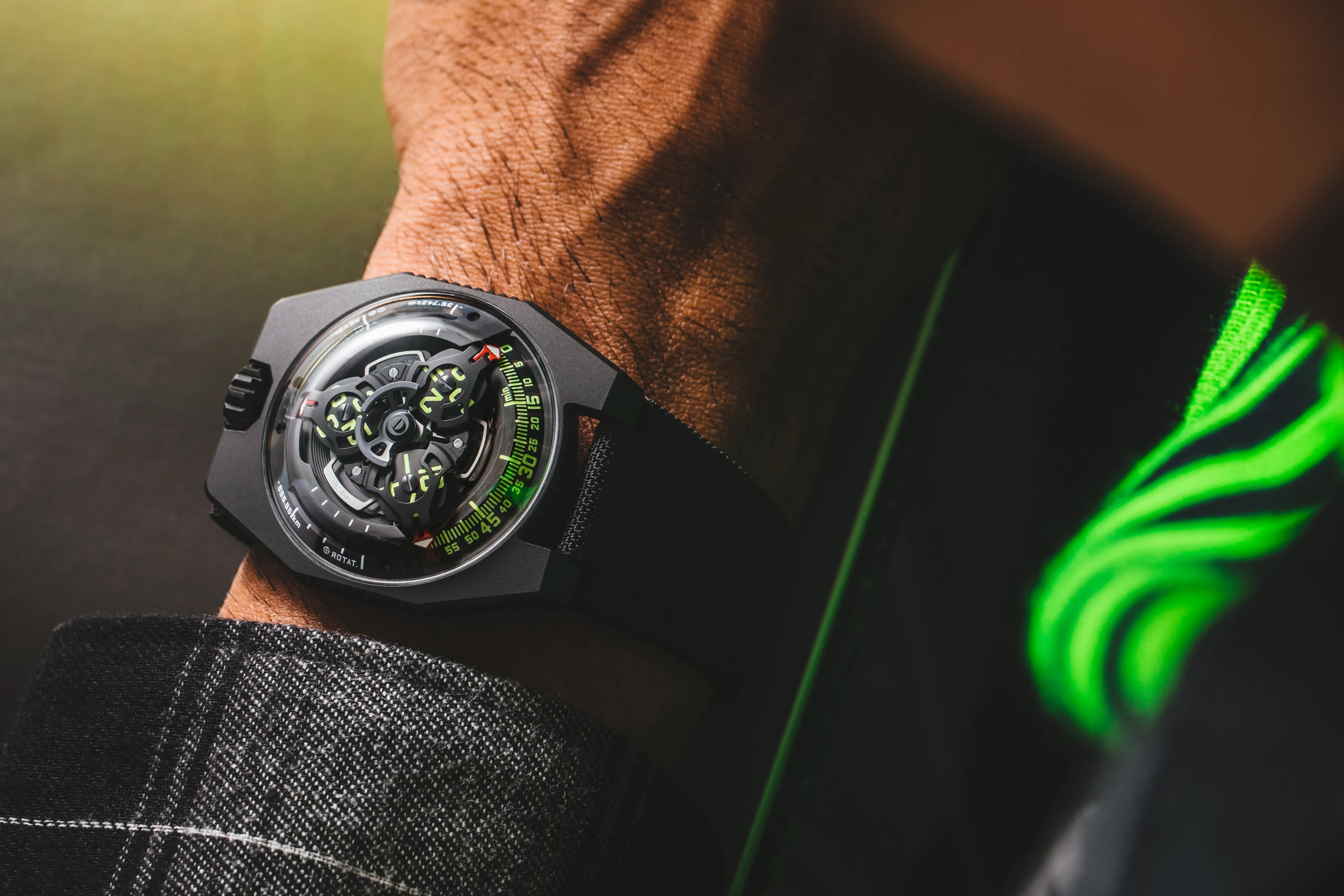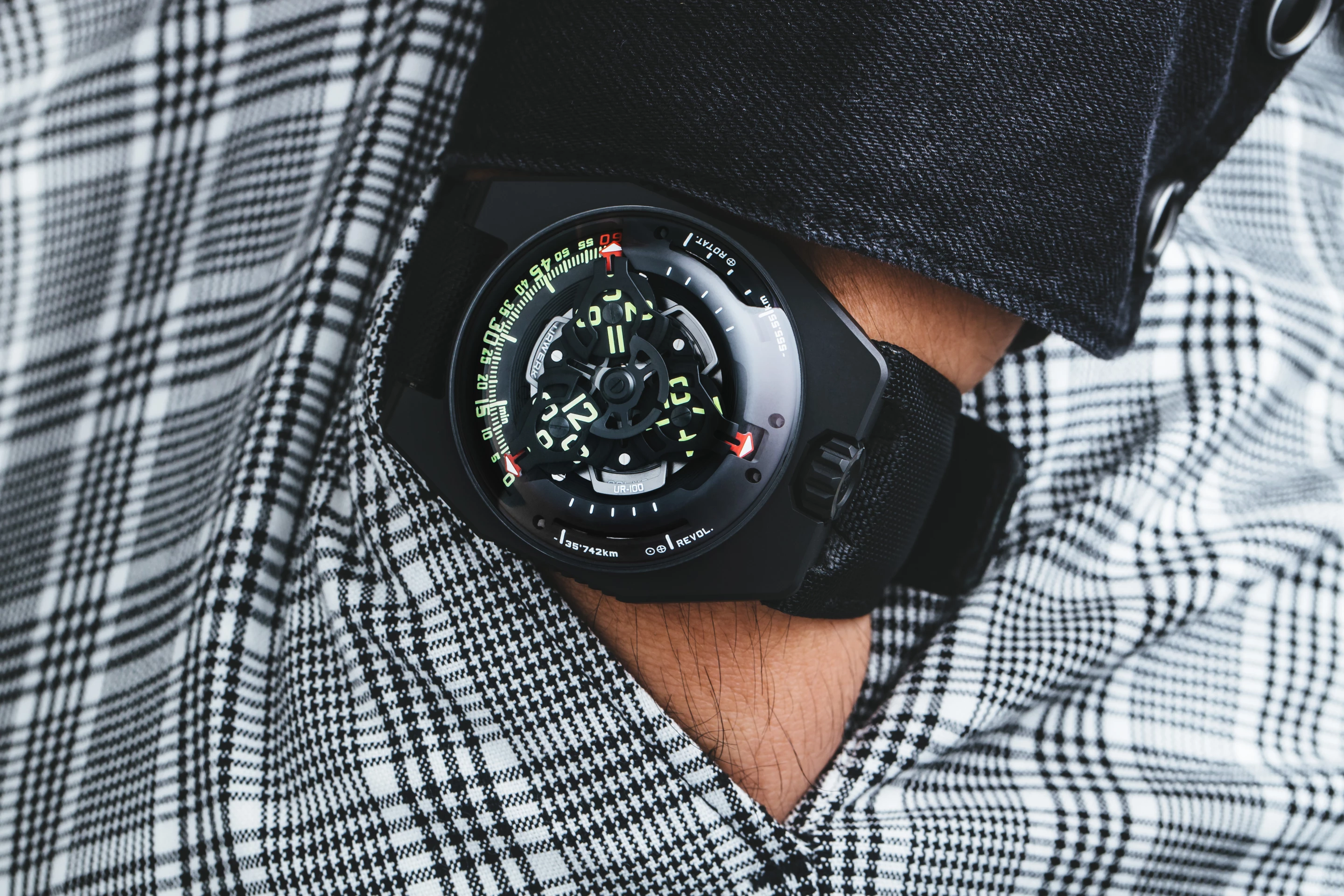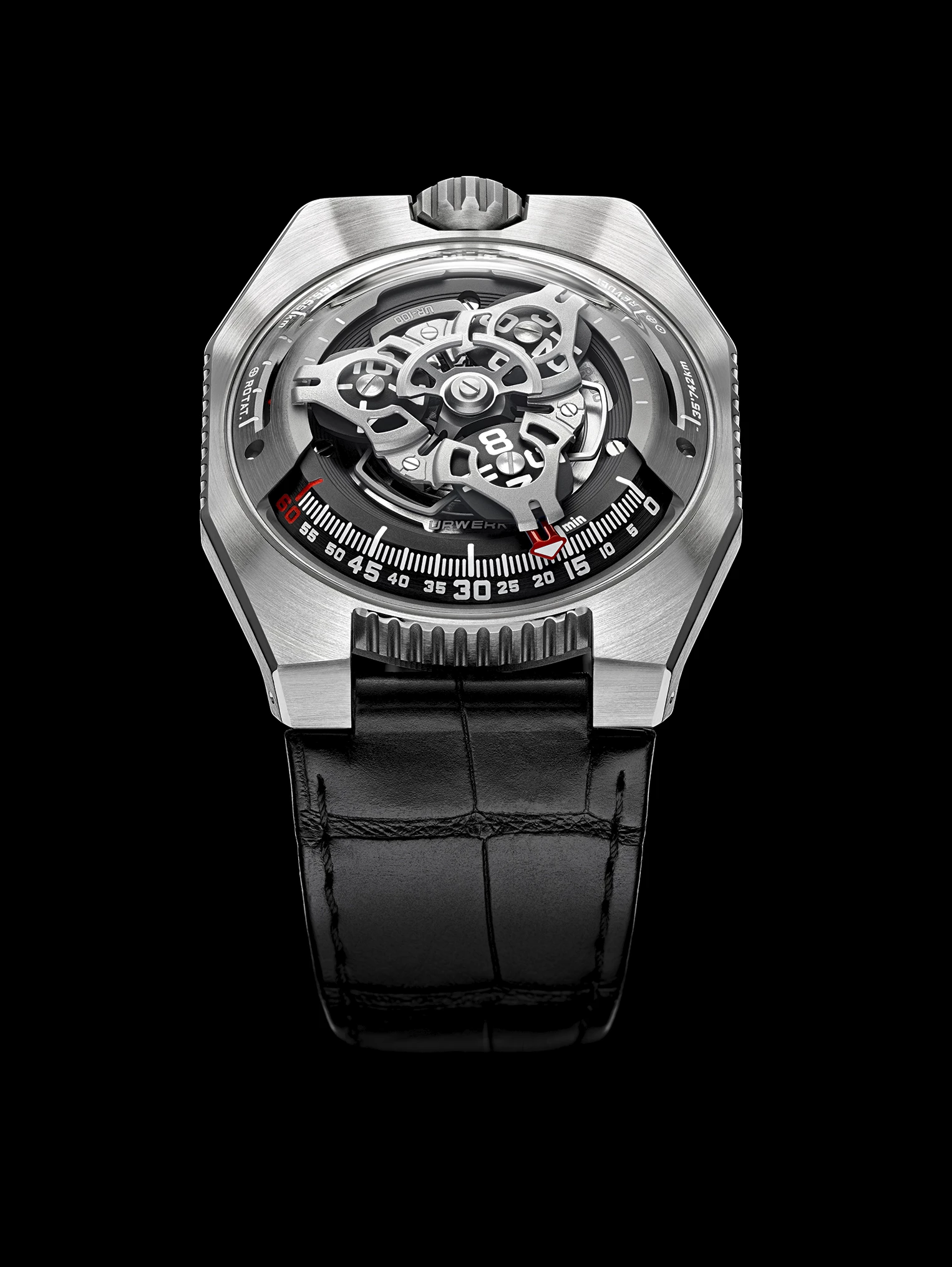Urwerk's UR-100 SpaceTime wristwatch doesn't just display the time, it also shows how far the Earth travels. Based on the UR-101 and UR-102 of two decades ago, the UR-100 uses three sets of indicators to show how far in kilometers the Earth rotates and moves in its orbit.
The Urwerk company produces many watches that are a bit out there, a bit baffling to read, and may not be the most comfortable to wear, but they are certainly never unoriginal or boring. For the UR 100 SpaceTime, the makers indulged in some lateral thinking by demonstrating that, if you look at it the right way, a watch doesn't just mark time, it also marks space.
Think about it. The basic definition of a day is the time it takes for the Earth to rotate once on its axis and a year is the time it takes for the Earth to revolve around the Sun. That means that the hands of a watch don't just record an abstract like time, but also the distance the Earth moves through the day or the distance it moves in its orbit.
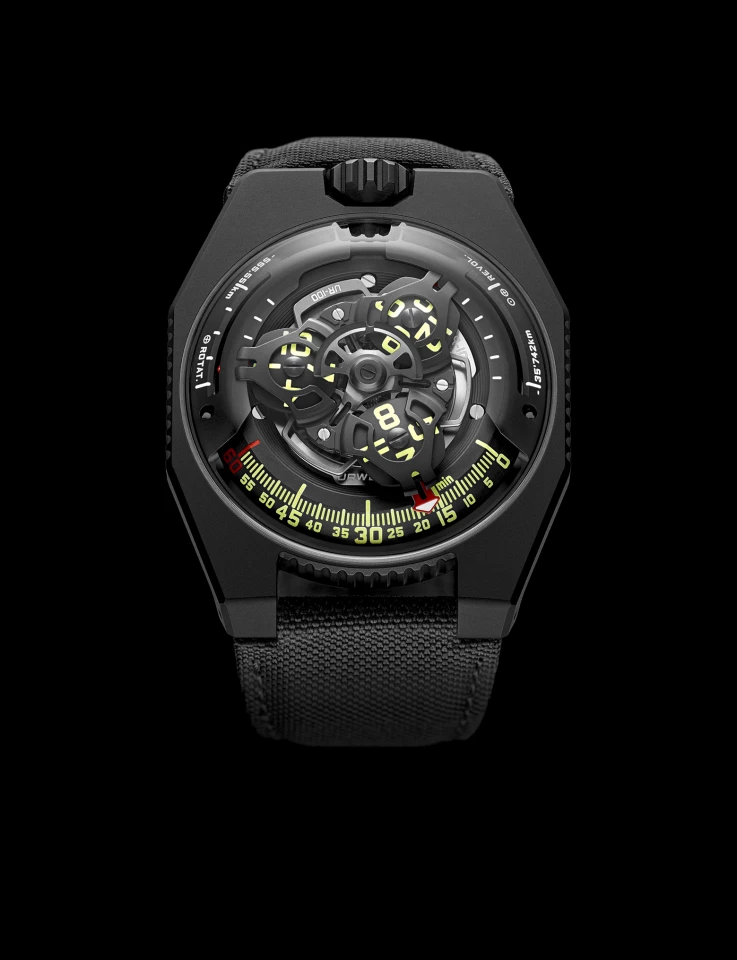
To illustrate this, the UR 100 has three main displays set on three hands in a triangular formation. The simplest is the time display at the six o'clock position, where the hour is displayed as a numeral in a window in the hand's skeleton design, and the minutes are pointed to by a red arrow on an indicator on the bottom of the dial. At the end of an hour, the arrow disappears under the subsidiary dials and is replaced by another one in rotation.
Meanwhile, at the 10 o'clock position is another indicator, which marks how far a point on the Earth's equator travels in kilometers every 20 minutes, which is 555 km (345 mi) based on the average rotation speed. At the end of the 20 minutes, the pointing arrow vanishes and is replaced as with the minute indicator.
Finally, at the two o'clock position is the distance traveled by the Earth in its orbit every 20 minutes based on average speed, which comes to 35,740 km (22,210 mi).
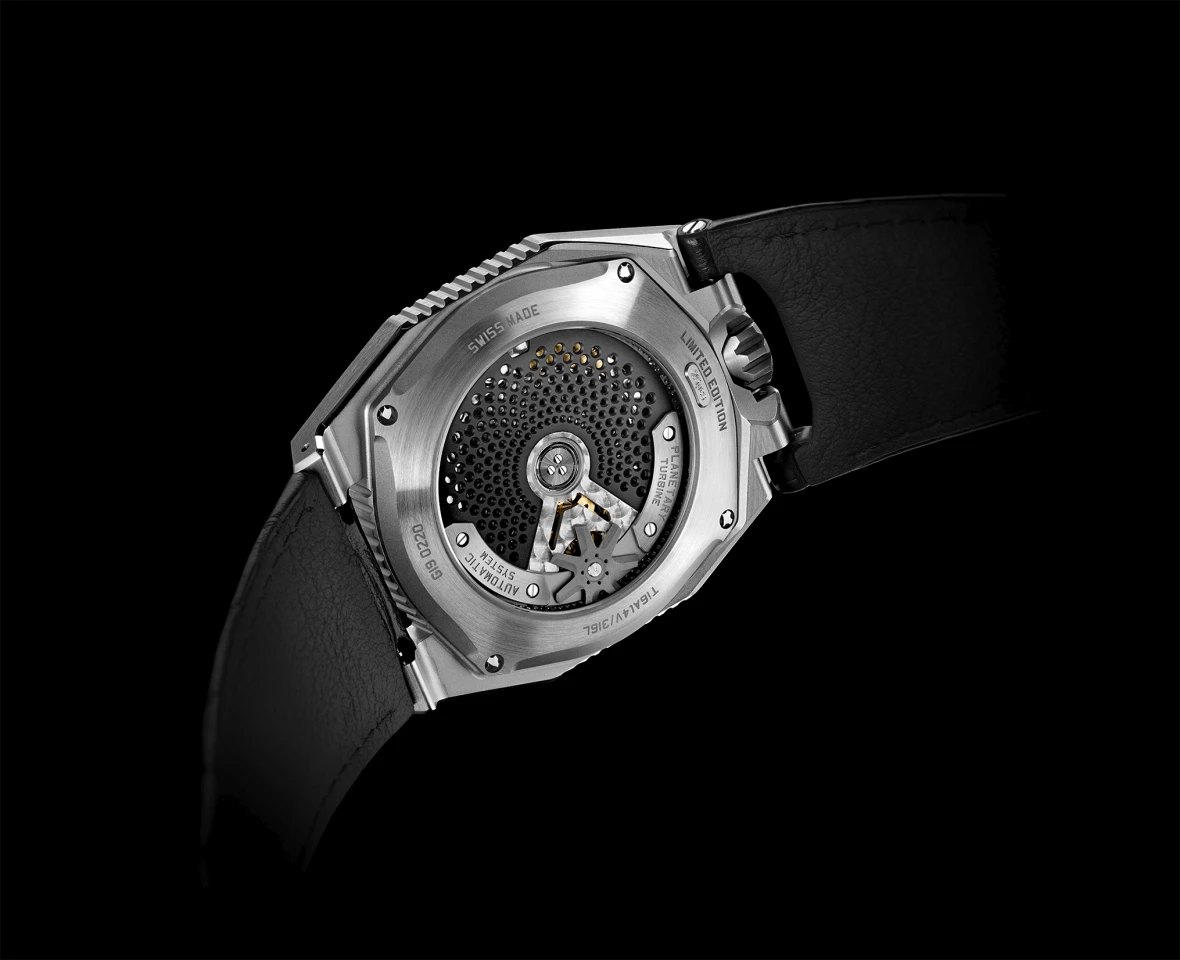
"For me, watches have a philosophical dimension," says Martin Frei, chief designer and co-founder of Urwerk. "They are a physical and abstract reproduction of our situation on Earth, with the dial representing the equator, simultaneously in constant motion while seemingly stationary for us."
To make all this work, the UR 100 SpaceTime is powered by the 39-jewel, automatic UR 12.01 caliber with a 48-hr power reserve and a frequency of 28,800 vph (4 Hz). The movement's rotor is of a larger diameter and lower mass than comparable versions. Working with the even larger low-profile, flat, governing planetary turbine, this reduces the wear and tear on the mechanism with the turbine's Windfäng ("air trap") design reducing overwinding and additional shocks.
The orbital satellites and Geneva-cross hands are made of beryllium bronze alloy set on an open-worked aluminum carousel with triple baseplates in ARCAP corrosion-resistant, anti-magnetic alloy. The surfaces are finished with circular graining, sanding, and brushing, while the hour and minute indicators are in photoluminescent Super-LumiNova.
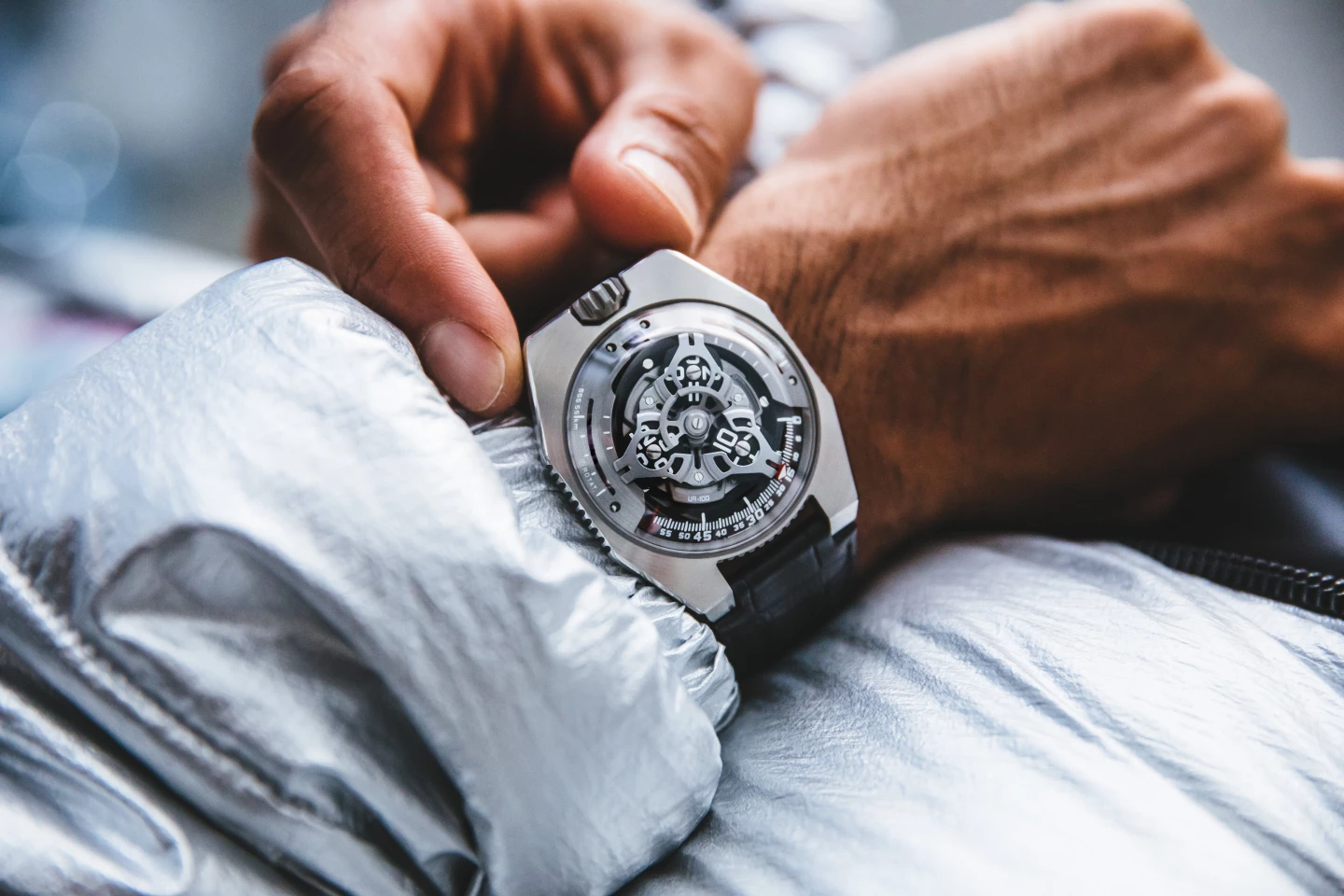
As to the 41-mm case, it's available in the UR-100 Iron edition, which is made of coated titanium and steel, or the UR-100 Black edition, which is also titanium and steel with a black DLC coating. The sapphire crystal makes it water-resistant to 3 ATM (30 m, 100 ft).
According to Urwerk, the introductory editions of the UR-100 SpaceTime are limited to 25 units for each available finish with a price of CHF48,000 (US$48,475).
Source: Urwerk
